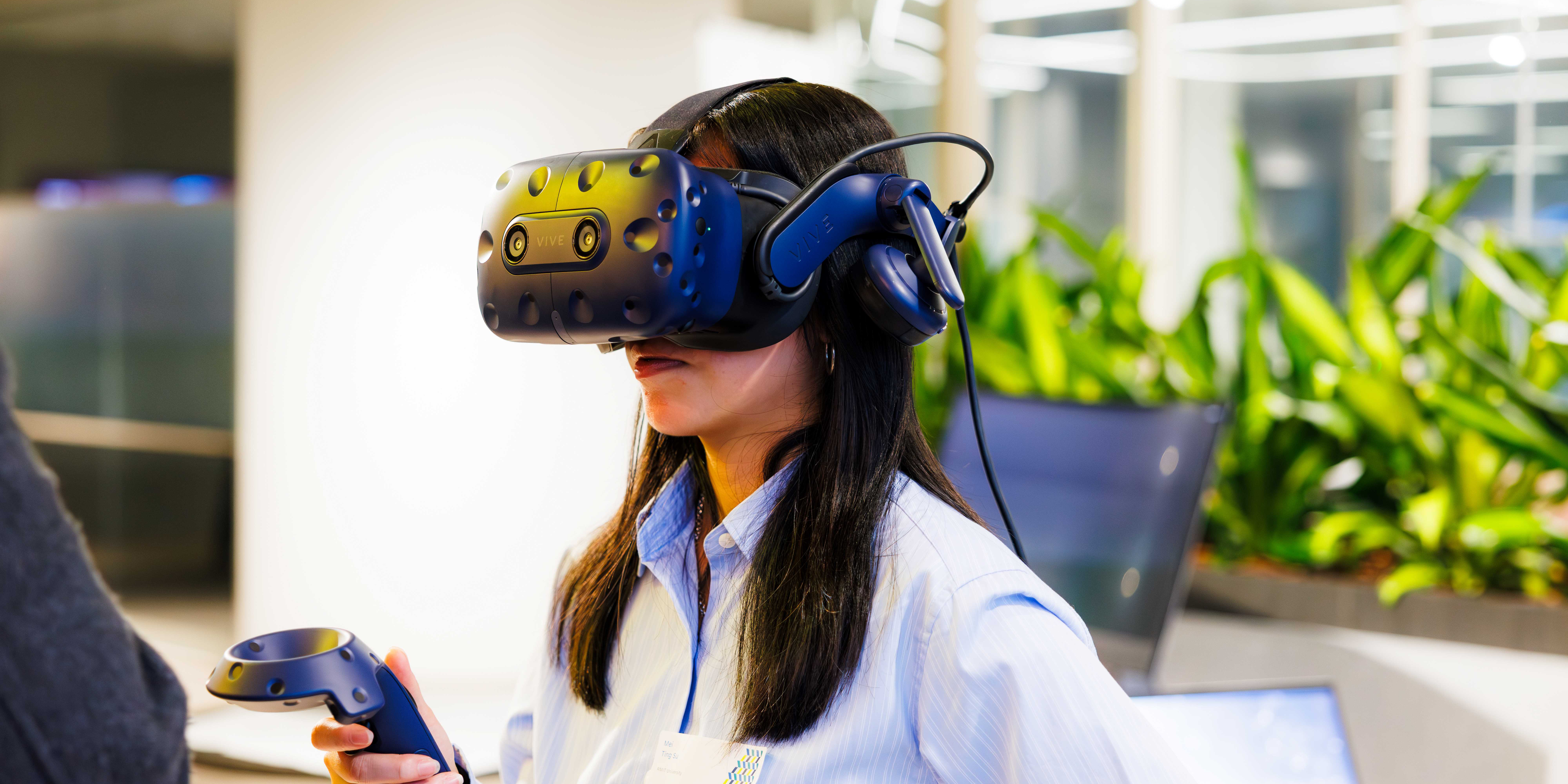How can immersive technologies improve safety in water?

Municipal water and wastewater treatment facilities are high-risk environments. Dangers from toxic chemicals, confined spaces, operating machinery and plant are just a few of the many risks workers face each day.
Ensuring safety for everyone and reliable operations is paramount – any technologies which can reduce or eliminate the need for people to spend time in these high-risk environments and reduce risks of work will improve safety outcomes.
Over the years, utilities have turned to technologies such as remote sensors, CCTV cameras, and even drones to provide information about assets while reducing the need for manual inspection.
But as technologies continue to improve, utilities are beginning to explore the ways immersive technologies - such as virtual reality (VR), augmented reality (AR) and related spatial tools – can be used to enhance safety.
Building a shared understanding
While immersive technologies aren’t new, they’re also not yet well understood. We know from our conversations with contractors, operators, utilities and engineers that everyone has their own ideas about what immersive technology is, and the value it brings.
This diversity of views complicates innovation and slows adoption, so it’s important to build a shared understanding of what immersive technology means, particularly within the water industry.
At its core, immersive technologies can replicate or enhance physical environments; allowing users to feel as though they’re immersed within them, rather than experiencing them through flat screens or printed materials. Some examples include:
- Virtual Reality (VR) – VR places users inside a fully simulated three-dimensional environment, typically accessed via a head-mounted display. In the water industry, VR has been used for operator training, familiarisation and safety-in-design reviews. It allows stakeholders to explore new or existing facilities virtually before construction or physical access, enabling hazard identification, procedural practice or stakeholder engagement in a safe and controlled setting.
- Augmented Reality (AR) – AR overlays digital information (such as diagrams, instructions or real-time data) onto the user’s view of the physical world. AR is typically delivered through mobile devices or wearable smart glasses. It has been used to allow field technicians to see underground assets, receive guided maintenance steps or communicate remotely with supervisors while working hands-free.
- Mixed Reality (MR) – MR is less clearly defined and is considered the class of technologies where a real object or person in the virtual world and a virtual object or person in the real world are experienced at the same time. While currently less widely adopted than VR and AR, MR is emerging in scenarios that require highly interactive, context-aware visualisation, such as in collaborative design reviews or remote inspections.
Bringing digital twins to life
Non-immersive technologies, such as building information modelling (BIM) and digital twins, are already important visualisation tools in water infrastructure projects.
Providing spatial and technical accuracy, digital twins are continuously updated with real-time and historical data, such as sensor readings, control system outputs or maintenance records, allowing asset owners and operators to monitor performance, simulate scenarios and make evidence-based decisions.
On their own, BIM and digital twins are incredibly powerful tools. However, when paired with immersive technology, digital twins are elevated to the next level. Rather than viewing 3D models via a 2D screen, the addition of immersive technology creates realistic, virtual environments, offering new insights into asset performance, risk, and maintenance. And most importantly, improving safety.
By placing users inside a realistic virtual treatment plant, for example, the use of VR allows hazards to be recognised and procedures to be rehearsed, without putting workers at physical risk. It can also be used in training for hazardous or rare scenarios that are difficult to practice in real life.
In water treatment, this could include chemical spills, chlorine gas leaks, electrical emergencies, working at heights, or confined space rescues. VR allows staff to rehearse and create the safest responses to these scenarios in a realistic but controlled setting.
What’s holding us back?
Years ago, VR required significant setup that demanded powerful PCs and sensors, lacked portability and needed highly specialist technicians. AR was largely limited to pilot trials.
Now, as hardware has become more user friendly and reduced in cost, we’re starting to see an uptick in the ways immersive technologies are being used within the water industry.
But we’re not there yet. Ongoing uncertainty and debate around what immersive technology is, what value it brings, and why water utilities should invest in it continues to delay innovation. It’s clear that immersive tech can improve safety in profound ways - the only limit is our imagination. So, if the tools exist and the need is clear, what’s holding us back?
Exploring the possibilities of immersive technologies and some of the biggest challenges to adoption will be amongst the key themes in our upcoming Ozwater’25 panel, Splashes of innovation – how immersive technology is enhancing safety in utilities. If you’d like to learn more about this topic, join us there!
Chris McKinnon is the Immersive Technology Solutions Industry Lead at KBR.

